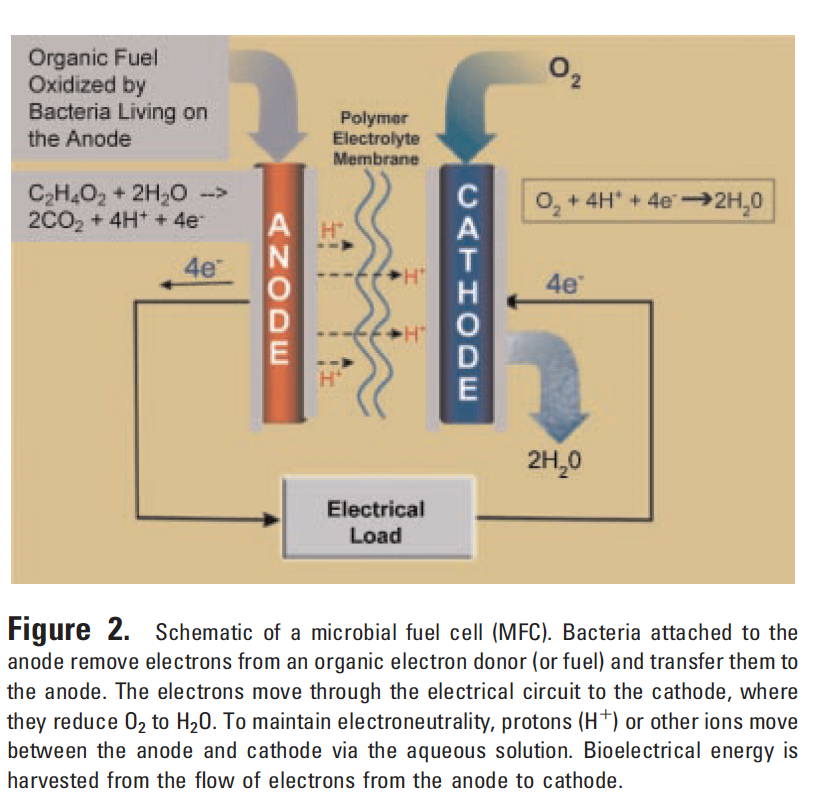PERSPECTIVE
Opportunities for Renewable Bioenergy Using Microorganisms
Bruce E. Rittmann
Center for Environmental Biotechnology, Biodesign Institute at Arizona State University,
P.O. Box 875701, Tempe, Arizona 85287-5701; telephone: .1-480-727-0434;
fax: .1-480-727-0889; e-mail: rittmann@asu.edu
(Complete article at: https://onlinelibrary.wiley.com/doi/abs/10.1002/bit.21875)
Received 4 January 2008; revision received 22 February 2008; accepted 27 February 2008
Published online 7 March 2008 in Wiley InterScience (www.interscience.wiley.com). DOI 10.1002/bit.21875
ABSTRACT: Global warming can be slowed, and perhaps reversed, only when society replaces fossil fuels with renewable, carbon-neutral alternatives. The best option is bioenergy: the sun’s energy is captured in biomass and converted to energy forms useful to modern society. To make a dent in global warming, bioenergy must be generated at a very high rate, since the world today uses 10 TW of fossil-fuel energy. And, it must do so without inflicting serious damage on the environment or disrupting our food supply. While most bioenergy options fail on both counts, several microorganism-based options have the potential to produce large amounts of renewable energy without disruptions. In one approach, microbial communities convert the energy value of various biomass residuals to socially useful energy. Biomass residuals come from agricultural, animal, and a variety of industrial operations, as well as from human wastes. Microorganisms can convert almost all of the energy in these wastes to methane, hydrogen, and electricity. In a second approach, photosynthetic microorganisms convert sunlight into biodiesel. Certain algae (eukaryotes) or cyanobacteria (prokaryotes) have high lipid contents. Under proper conditions, these photosynthetic microorganisms can produce lipids for biodiesel with yields per unit area 100 times or more than possible with any plant system. In addition, the non-lipid biomass can be converted to methane, hydrogen, or electricity. Photosynthetic microorganisms do not require arable land, an advantage because our arable land must be used to produce food. Algae or cyanobacteria may be the best option to produce bioenergy at rates high enough to replace a substantial fraction of our society’s use of fossil fuels.
Biotechnol. Bioeng. 2008;100: 203–212.
2008 Wiley Periodicals, Inc.
KEYWORDS: biodiesel; bioelectricity; bioenergy; biohydrogen;
methane; microbial fuel cell; microorganisms;
photosynthesis
Introduction—The Challenge Human society seems to have an insatiable appetite for fossil fuels. We now consume about 13 terrawatts (1 TW.1012 W.3.2 EJ/year) of energy worldwide, and approximately 80% of that comes from burning fossil fuels (Goldemberg and Johansson, 2004). Our dependence on fossil fuels poses three giant risks for the survival of human society as we now know it. The first risk is that we will deplete fossil-fuel reserves, leaving human society metaphorically and perhaps literally ‘‘cold, hungry, and in the dark.’’ The second risk is that geopolitical strife from competition for dwindling resources will lead to economic and energy disruptions, political turmoil, and war. The third risk is from global climate change caused by the net increase in atmospheric CO2 due to combustion of the fossil fuels. Although the portent of catastrophe may seem more immediate from the first two risks, it is the third risk that will have the most long-lasting and profound impact. Fortunately, we have the potential to reduce, or perhaps even eliminate, the third risk by converting to renewable, carbon-neutral energy sources that provide the energy services now obtained from fossil fuels.









